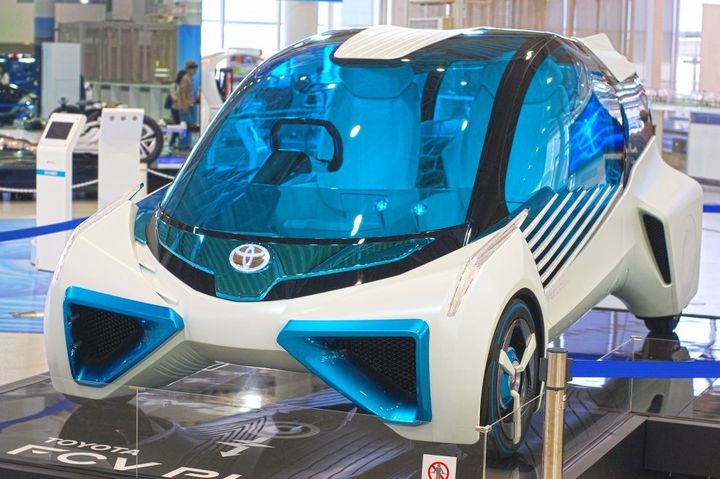
Autonomous vehicles, it wasn’t so long ago they were reserved to the realm of science fiction, little more than a fantasy to dream about on a rainy day. However, with the recent boom in smart vehicle technology, completely autonomous vehicles are here, and they’re not going away.
Now, before we go any further let’s quickly answer the question:
What is an autonomous vehicle?
An autonomous vehicle is one that can operate and guide itself without any human assistance. Vehicles that can park themselves are what you’d call semi-autonomous and were a major first-step in getting consumers accustomed to the idea of driverless vehicles.
While you can look to movies like I, Robot to get an idea of what autonomous cars will be like, we decided to go see a group of industry experts instead, and we asked them…
What’s the future of autonomous vehicles?
Here’s what they had to say…
Ian Worrall , CEO of Encrypted Labs, Inc. & Co-founder of Mybit.io

“I believe that companies getting into self driving mobiles will need to utilize alternative financing methods due to the socioeconomic benefits they can possess which enable individuals whose jobs were replaced to generate passive residual income (similar to UBI). This enables companies to jump into the market faster than traditional financing methods and people will receive real time revenue distribution for work the self driving vehicles complete.”
Scott Frank, VP of Marketing at Airbiquity

“In the somewhat near future, fully autonomous and connected vehicles will become the norm, as ‘smart cities’ become a reality. By the time autonomous is fully adopted, the vehicle will have transformed into essentially a moving room on wheels, allowing the user to experience and stay connected with everything they would at home, in their vehicle. This means the vehicle is fully connected to the user’s home and mobile ecosystems, allowing them to watch their favorite films and TV shows, check in on their heating and home security, or even just take a nap, all whilst travelling in their car.”
Iain Levy, VP of Automotive with eyeSight

“As we move along the path to vehicles with more autonomous features towards fully autonomous vehicles, drivers will have more free time when in the vehicle. Understanding the drivers state using machine learning is going to be critical to know the driver’s situation when moving between autonomous and manual functionality. As vehicles become fully autonomous, there will be less need for people to own their own vehicles and the market will shift towards car sharing programs. Identifying who the driver or passenger is through facial recognition technology and being able to personalize the vehicle will make the sharing experience more enjoyable for the user. Finally, autonomous functions allow drivers to move further away from the steering wheel and infotainment systems, so being able to control these systems via simple, natural gestures will be sought after by consumers.”
Russell Ure, CEO & Founder of Klashwerks

“Although the initial sentiment toward self-driving cars was negative, most people are reevaluating their expectations now that it’s all becoming a reality. It may take a long time to establish push back toward the conversation, but realistic expectations about the timing of connected cars need to be set. Semi-autonomous vehicles means a person still needs to be in the car to take the reigns when needed. If regulations aren’t implemented, we should expect a pour of accidents and potential lawsuits to occur.”
John J. Slater III, Real Estate Attorney at Sherin and Lodgen

“Estimates of how soon AVs may be ready for actual use on public roadways vary. There appears to be a consensus that various impediments, such as revisions to motor vehicle laws and insurance issues, are likely to prevent the adoption of AVs on a wide scale basis by consumers for another 20 years. However, a KPMG/Center for Automotive Research report predicts that the first vehicle-to-vehicle infrastructure technologies will be released to the market as early as 2018 or 2019, and that by 2025, there will be sufficient built-in and aftermarket products to support driver automation. Additionally, the report predicts that consumers will begin to adopt AVs on a large scale by 2030. A RCLCO Advisory Report also estimates that there will be an increasing use of AVs by consumers between 2030 and 2035.”
Ansi Vallens , Owner of Signals & Strategies

“Projections of autonomous vehicle development and market penetration are wildly optimistic and are driven not by engineers in Detroit or San Jose, but by Wall St. analysts who are paid to flog certain stocks.
The greater the traffic density, the lower the autonomous vehicle penetration. Can you imagine an autonomous vehicle making it across town in Manhattan? Can’t do it. Why? The vehicle is programed not to violate traffic laws and yield to other traffic and pedestrians.
Where I do expect to see some penetration is in Class 8, over-the-road semi tractor trailers moving freight over some low-density Interstates. But Rt. 95? Fughedaboutit!
We’re also leaving out the michief makers. All it takes is a kid on a bicycle to bring a 30-to semi to a stop. Ha! Is the truck going to yell at the kid? Call the cops?
Man vs. machine. You’re in traffic. There’s a big semi next to you. That lane is clear. What do you do? Cut him off of course.
Autonomous vehicles will have their place, but let’s be realistic.”
